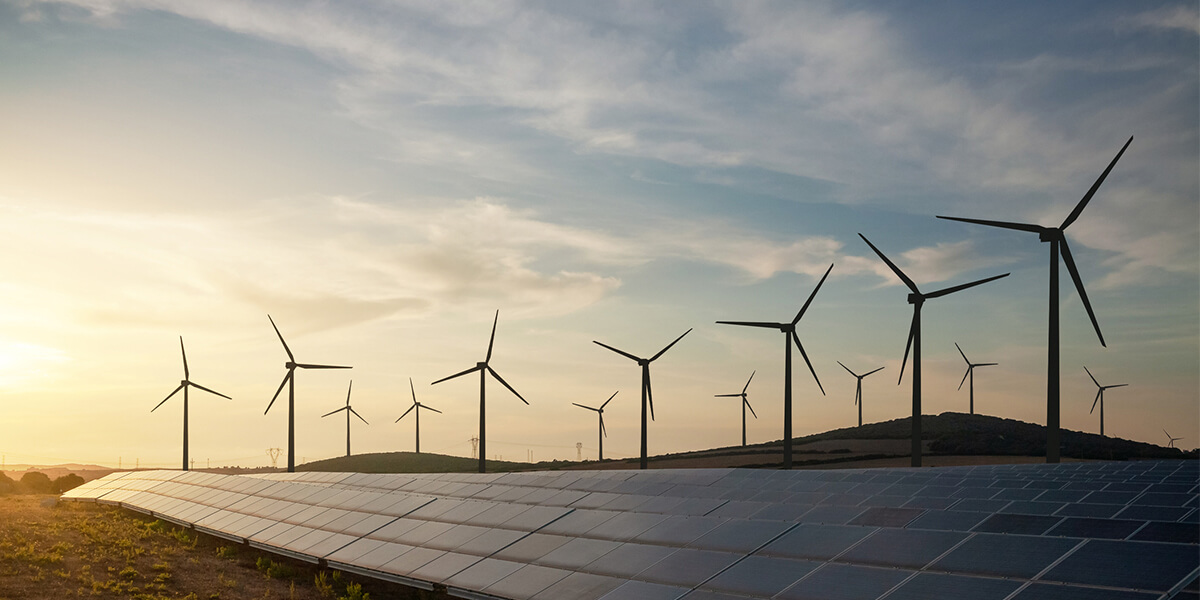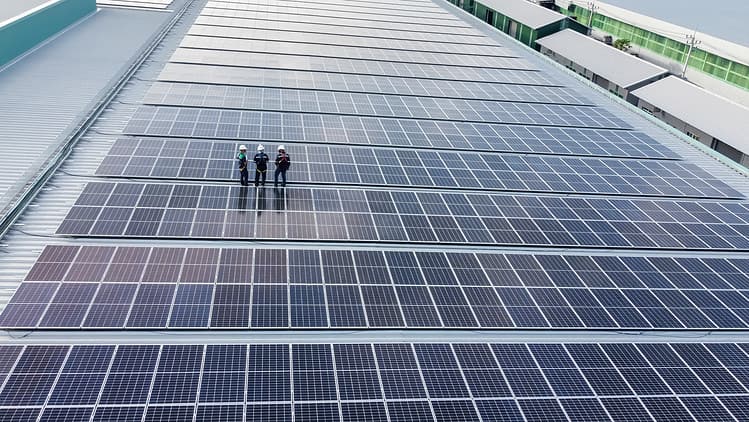
As we begin the second year of “In Real Time,” the future doesn’t look very promising. Almost one-third of U.S. states have plunged into one-party authoritarian rule, and many are gripped by hostility to any form of climate action. Over the past year, voters and activists across the nation have managed to slow the anti-democratic slide, but nothing has altered the federal government’s stolid inaction when it comes to fossil fuels. And greenhouse gas emissions keep rising.
With the Earth heating up while governments remain frozen on climate policy, most of the action is happening in countless rebellious communities across the country. Through the past year, “ In Real Time” has featured collective action at the grassroots, including from the Indigenous Environmental Network, the L.A. Bus Riders Union, the Poor People’s Campaign, Native peoples and farmers uniting to fight carbon pipelines, Start: Empowerment, the Environmental Justice Leadership Forum, Extinction Rebellion DC, Farmers for Climate Action, Defend the Atlanta Forest and other groups. Even if the federal government was taking effective action on climate, local movements would be crucial to curbing capitalism’s assault on the Earth. Now, with leaders in Washington and other world capitals still letting us down, local and regional action will be more important than ever.
There is still time to temper somewhat the ecological devastation and human suffering that will come with catastrophic heating. Deployment of technology alone, however, won’t suffice.
Cap and Scale Back
To start the second year, I’d like to look ahead to our long-term prospects for a livable future. For “In Real Time,” the bottom line is twofold: that a rapid, nationally mandated phaseout of oil, gas, and coal is necessary to drive down U.S. greenhouse-gas emissions at the required rate, and that the resulting decrease in the supply of energy and other resources will require equitable allocation of physical and economic resources to meet basic needs. Given the nature of our institutions and power structure, it’s becoming increasingly difficult even to imagine a scenario in which that sort of just, humane phaseout can be achieved. But it remains essential to push harder than ever for such policies, despite the long political odds they face.
This is no time to give up. The atmosphere’s average temperature is now destined to reach and surpass 1.5°C above preindustrial levels within a decade. And if the world’s economies stay on their current track, the heat-up will blow through 2°C and approach or exceed 3°C by 2100. Such warming, say scientists, carries a “high” to “very high” risk of “catastrophic climate change”—bad enough to render much of the Earth hostile to human life.

There is still time to temper somewhat the ecological devastation and human suffering that will come with catastrophic heating. Deployment of technology alone, however, won’t suffice. History and research tell us that a buildup of new energy capacity won’t flush oil and fossil gas out of the system. For example, electricity generation from wind, solar, and biofuel sources has soared 50-fold since 2000, but the share of the world’s primary energy provided by fossil fuels fell only slightly during that time, from 87 to 85%. Even then, most of that puny shift was due to an increase in production of hydroelectric power, a well-known source of ecological and humanitarian problems.
Assault and Batteries
Weaning the world’s rich economies off fossil fuels will require adaptation to a much smaller energy supply. Attempting to replicate the high-energy economies of the fossil-fuel era using non-fossil energy sources would require extensive plunder of the Earth’s resources, compounding the problems that are coming with climate change.
In transforming the face of the Earth, industrial civilization has already reached a remarkable milepost. In recent years, the global quantity of “ human-made mass,”—that is, the total weight of inanimate solid objects manufactured or constructed by humanity and still intact (thus not including waste material)—surpassed the total weight of all living plants, animals, and microbial biomass on Earth. This production of human-made stuff (the quantity of which has been doubling every 20 years or so) is triggering Earth-wide devastation, with climate disruption, mass species extinctions, and the breakdown of entire ecosystems. To fully appreciate this grim juncture in human history, have a look at this mind-boggling graphic comparison between the current quantities of human-made and nature-made mass on Earth. Notice in the image that the “metals” portion of material production has been small relative to, say, concrete. But with the rise of the “green-energy” economy, a lot more metal will be coming out of the ground and into the human-made world.
The industrial world is violating ecological boundaries in countless ways, but here I’ll focus just on the metals that will be required by a non-fossil-fueled energy system. The now-prevalent vision for reducing oil and gas use, as embodied in last year’s Inflation Reduction Act, is to wholly convert the U.S. economy to operate with electric vehicles, heat pumps, and other technologies that feed off power plants rather than directly combusting fuels. It also would feature an unprecedented boom in the deployment of wind and solar farms across the nation’s landscape, along with a 60% expansion and a sweeping overhaul of the national power grid. Countless wind turbines will be required, each with a generator containing 60 tons or more of metal. The grid upgrade will require huge quantities of copper for new power lines as well as copper, lithium, cobalt, and nickel to produce hundreds of millions of tons of lithium-ion batteries for power storage. Many millions of batteries will also be needed to convert the national vehicle fleet to run on electricity.
If the world plows ahead with building this metal-clad energy empire and accepting its ecological and human impacts, it won’t be adequate to secure the future indefinitely.
Globally, the mining and processing of metallic ores has doubled just since 2000 and is responsible for a whopping 10% of total world energy consumption. Now, if plans to “electrify everything” are carried out worldwide, the tonnage of metal extracted and processed in the next 15 years alone will exceed the tonnage that humans have produced during the 5,000 years since the start of the Bronze Age.
TheWashington Post, citing International Energy Agency figures, predicts that by 2040, global demand for metals that go into batteries will balloon 20-fold for nickel and cobalt and 40-fold for lithium; demand for manganese, critical for wind turbines, will increase ninefold in just the next decade. Demand for aluminum, which is already produced in vastly larger quantities than any of those metals, will increase by yet another 40%, largely to produce lighter-weight electric cars and support solar arrays.
Forbes estimates that almost 400 new mines will be opened worldwide by 2035 just to keep battery factories supplied with cobalt, lithium, and nickel. This will create many more of what has come to be known as “green sacrifice zones”: localities across the world, from Congo to Guinea to China to Bolivia to the Pacific Ocean, that are bearing or will bear the human, environmental, and socioeconomic costs of the transition to non-fossil energy. And the deployment of wind and solar power plants across the world’s windier and sunnier regions will mean converting vast stretches of the Earth’s land surface and even seabeds into industrial energy farms.
If the world plows ahead with building this metal-clad energy empire and accepting its ecological and human impacts, it won’t be adequate to secure the future indefinitely. An analysis conducted for the Geological Survey of Finland found that the number of batteries required to electrify the world’s vehicles and also provide the world’s power grids with enough batteries for backup storage would exhaust all known lithium, cobalt, and nickel reserves several times over. A new, destructive surge in mineral exploration and the opening of new mines around the world would be necessary. And the need for metal will never end. Decade after decade, billions of tons of batteries will go dead and need to be replaced. That’s just what batteries do, and we can’t count on recycling to solve the problem.
In the quest for sufficient mineral resources to make green dreams come true, affluent societies will become more dependent on an even more technologically complex, even more physically vulnerable energy supply as they exploit the resources of the Global South. Those promoting this quest are all too aware that we are bursting through our planet’s ecological and resource limits; that’s why companies are lining up to get NASA contracts for mining the moon and asteroids. (As a California entrepreneur involved in such efforts toldSpace.com, “Nobody wants to think about a future in which humans don’t thrive. So it’s time for us to go into space.”)
Holding Onto Our Humanity
Even as the Intergovernmental Panel on Climate Change warns that efforts to prevent ecological meltdown are approaching a “ rapidly closing window” for action, the nations of the North are holding back, discussing instead the color of the curtains.
It doesn’t have to be this way. The alternative to a voracious, high-energy, self-sabotaging economy would be one that provides for just enough material production to equitably ensure a decent, satisfying life for all. But the political (as in “of the polis,” i.e., of the people) obstacles would be formidable. Policymaking should reflect the will of the people, and the vast majority of Americans do want their world to remain green and livable. With our political and economic systems so broken and unjust, though, how can majority support for a smaller total energy supply and lower material consumption be marshaled for action? A new industrial policy designed to ensure that everyone’s needs are met, coupled with new distributive policies that guarantee equitable, adequate access for all (which, in fact, would improve access for many low-income households), could win over some voters, maybe even a sizable number—but probably not a majority. And even if it did, corporate America would not allow anything like that to go into effect.
As life becomes more difficult in more seasons and more places, local solidarity will become more and more essential—and maybe even more likely to emerge.
We shouldn’t rule anything out. Who knows, maybe the governments of the world will come to their collective senses and undertake serious climate action sometime in this century, as author Kim Stanley Robinson envisions in his novel The Ministry for the Future. I expect, though, that such success will remain confined to the world of fiction. Some progress, much more modest, may still be possible if rising climate chaos and a groundswell of public clamor force governments to keep as much oil, gas, and coal in the ground as possible. That could succeed in shaving tenths of degrees from the temperatures that we and future generations will endure, with each tenth giving us a little more breathing room to prepare for life in a world that will become less and less recognizable. For a picture of what life on that kind of Earth might be like, you could check out the early chapters of The Ministry for the Future. But here, let’s turn to a different book, this one nonfiction. In An Inconvenient Apocalypse: Environmental Collapse, Climate Crisis, and the Fate of Humanity (Notre Dame Press, 2022), my longtime friends and colleagues, Wes Jackson and Robert Jensen, write:
The human species faces multiple cascading social and ecological crises that will not be solved by virtuous individuals making moral judgments of others’ failures or by frugal people exhorting the profligate to lessen their consumption. Things are bad, getting worse, and getting worse faster than we expected. This is happening not because of a few bad people or bad systems, though there are plenty of people doing bad things in bad systems that reward people for doing those bad things. At the core of the problem is our human-carbon nature, the scramble for energy-rich carbon that defines life. Technological innovations can help us cope but cannot indefinitely forestall the dramatic changes that will test our ability to hold onto our humanity in the face of dislocation and deprivation.
Invoking the singer-songwriter John Gorka, Jackson, and Jensen write, “The old future is gone.” Whether by design or not, the new future will, in their words, be one of “fewer and less.” Along with individual and community action, they urge, a new, larger political process is needed “to deal with the dramatic changes coming. Being ready for a radically different life for everyone as part of a radically different ecosphere requires planning.” Along with creating new political and economic systems, it will also be necessary to “cultivate a more ecological vision to replace the dominant culture’s current linking of a good life to an industrial worldview, what in other writing we have called a ‘creaturely worldview.’”
As life becomes more difficult in more seasons and more places, local solidarity will become more and more essential—and maybe even more likely to emerge. Struggles by the environmental justice movement to end industrial assaults on marginalized communities, by Indigenous people against pipelines and mines, by Atlanta’s Black community to save the city’s largest forest from destruction by the police department, and other efforts are models for movements that, I hope, will multiply. In coming decades, it will be essential that communities across the nation and world find a way to sustain a decent life amid ecological breakdown, in a future they themselves didn’t create.
The original version of this article was published by City Lights Books as part of their ‘In Real Time' series. Stan Cox (@CoxStan) is the author of The Green New Deal and Beyond (2020) and The Path to a Livable Future (2021), both from City Lights. See the evolving ‘In Real Time’ visual work at the illustrated archive; listen to the ‘In Real Time’ podcast for the spoken version of this article; and hear a discussion of it on the Anti-Empire Project podcast.




